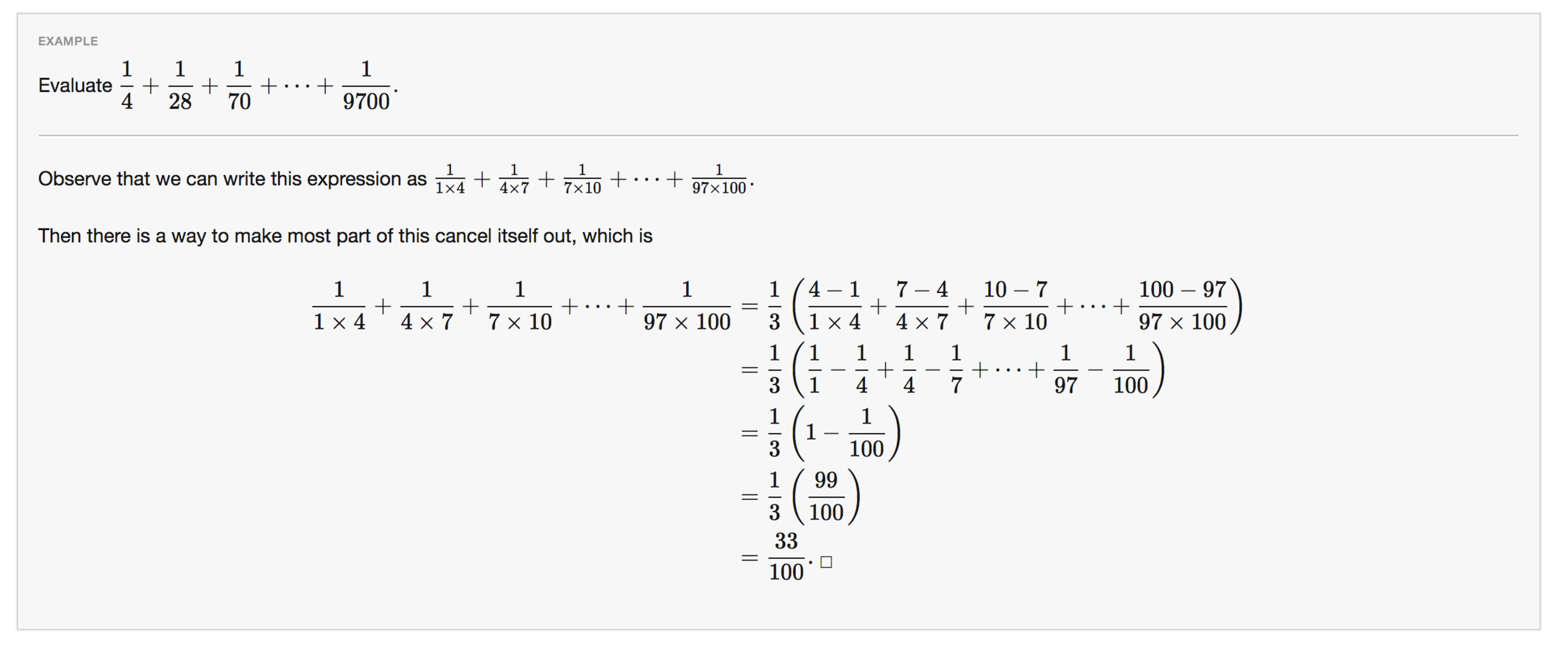Help in understanding this...
On the wiki page for telescoping series, this example is given....

Can someone help me understand the second step, where the fraction is reduced to all 1s in the numerator? I've researched the internet to understand how this was so simply done. How does (4-1)/(1*4) reduce so nicely? (I know it does, obviously), but there is a template here where the numerators go to 1 while the denominators go individually to, say, 1 and 4 (in the first fraction).
Is there a reason 1/3 was pulled out of the series? How was that number derived, other than trial and error.
It a general rule that (x-y)/(yx) can be reduced to 1/y minus 1/x. Is creating a situation where you have (x-y)/(yx) the basis for finding the 1/3 that is outside the parentheses and for how you go about solving this type of problem more generally?
Easy Math Editor
This discussion board is a place to discuss our Daily Challenges and the math and science related to those challenges. Explanations are more than just a solution — they should explain the steps and thinking strategies that you used to obtain the solution. Comments should further the discussion of math and science.
When posting on Brilliant:
*italics*or_italics_**bold**or__bold__paragraph 1
paragraph 2
[example link](https://brilliant.org)> This is a quote# I indented these lines # 4 spaces, and now they show # up as a code block. print "hello world"\(...\)or\[...\]to ensure proper formatting.2 \times 32^{34}a_{i-1}\frac{2}{3}\sqrt{2}\sum_{i=1}^3\sin \theta\boxed{123}Comments
This follows by simply observing that
1⋅44−1=1⋅44−1⋅41=11−41
The reason for taking out 31 is for the numerators to get cancelled out...….here's an example...…
1⋅71+7⋅131+13⋅191+...
=61(1⋅76+7⋅136+13⋅196+...)
=61(1⋅77−1+7⋅1313−7+13⋅1919−13+...)
=61(1⋅77−1⋅71+7⋅1313−7⋅137+13⋅1919−13⋅1913+...)
=61(11−71+71−131+131−191+...)
=61
Check out Partial Fractions to learn how to decompose such fractions.